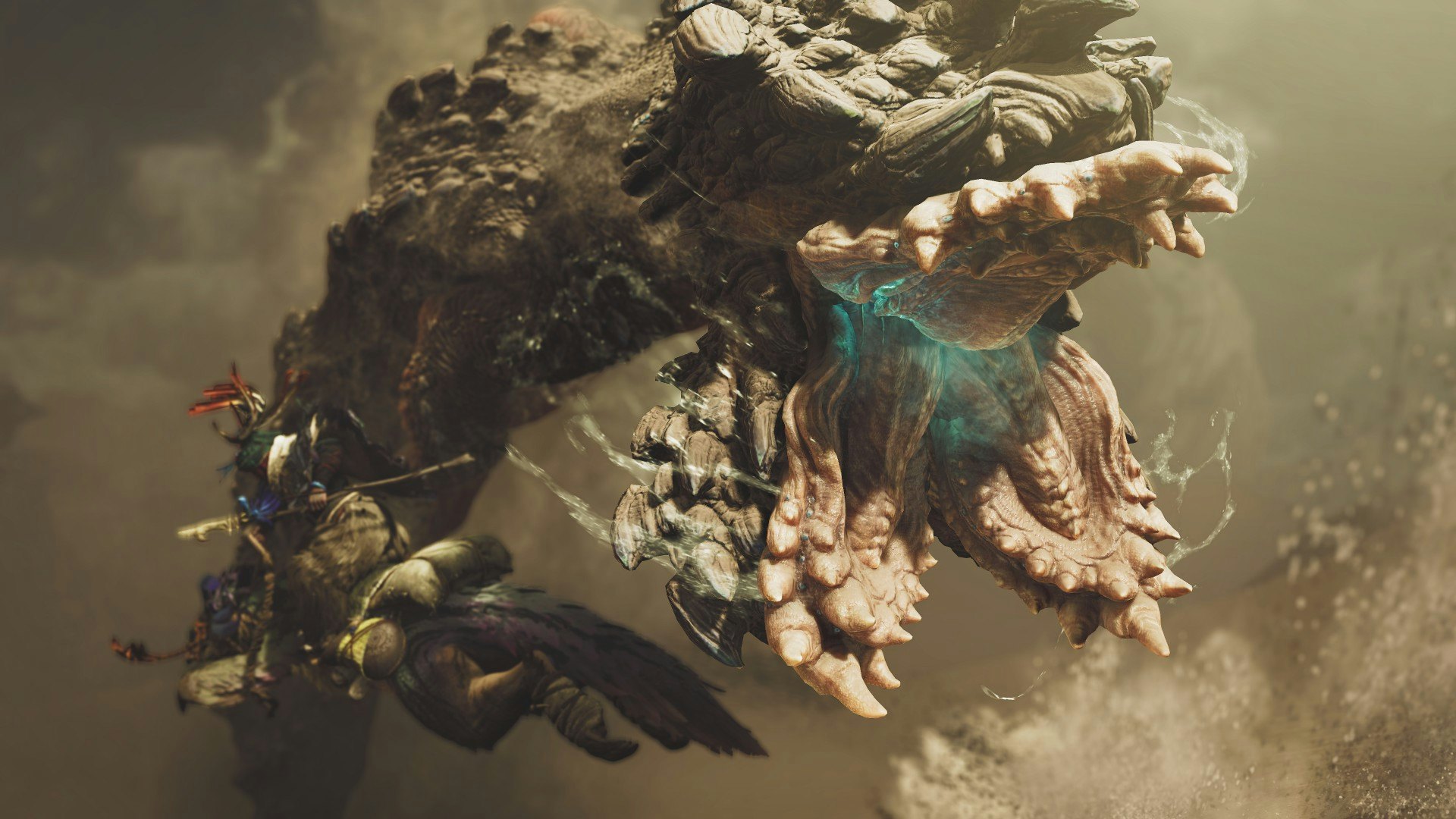
Since the release of the smash hit Monster Hunter World, the franchise has become a phenomenon on the same level as Resident Evil. A niche series now turned mainstream, Monster Hunter Wilds is the next game after the massively ambitious World, and it’s already looking like it could be the crown jewel in Capcom’s incredible resurgence. Perhaps most impressively, however, the developers behind Wilds are keeping a level head, not intimidated by the extra pressure of following-up on Capcom’s best-selling game ever.
“The main pressure we feel on this, or any Monster Hunter title, is more about can we achieve what it is we're setting out to do with the game design. It doesn't necessarily change because of the performance of a predecessor,” producer Ryozo Tsujimoto tells Inverse, “In my mind, we just have a bigger audience to give this game to because they all came on board with Monster Hunter World and they're waiting for the next game. I don’t necessarily think of it as pressure to perform, as much as it’s my job to bring those players the next game they’re anticipating.”
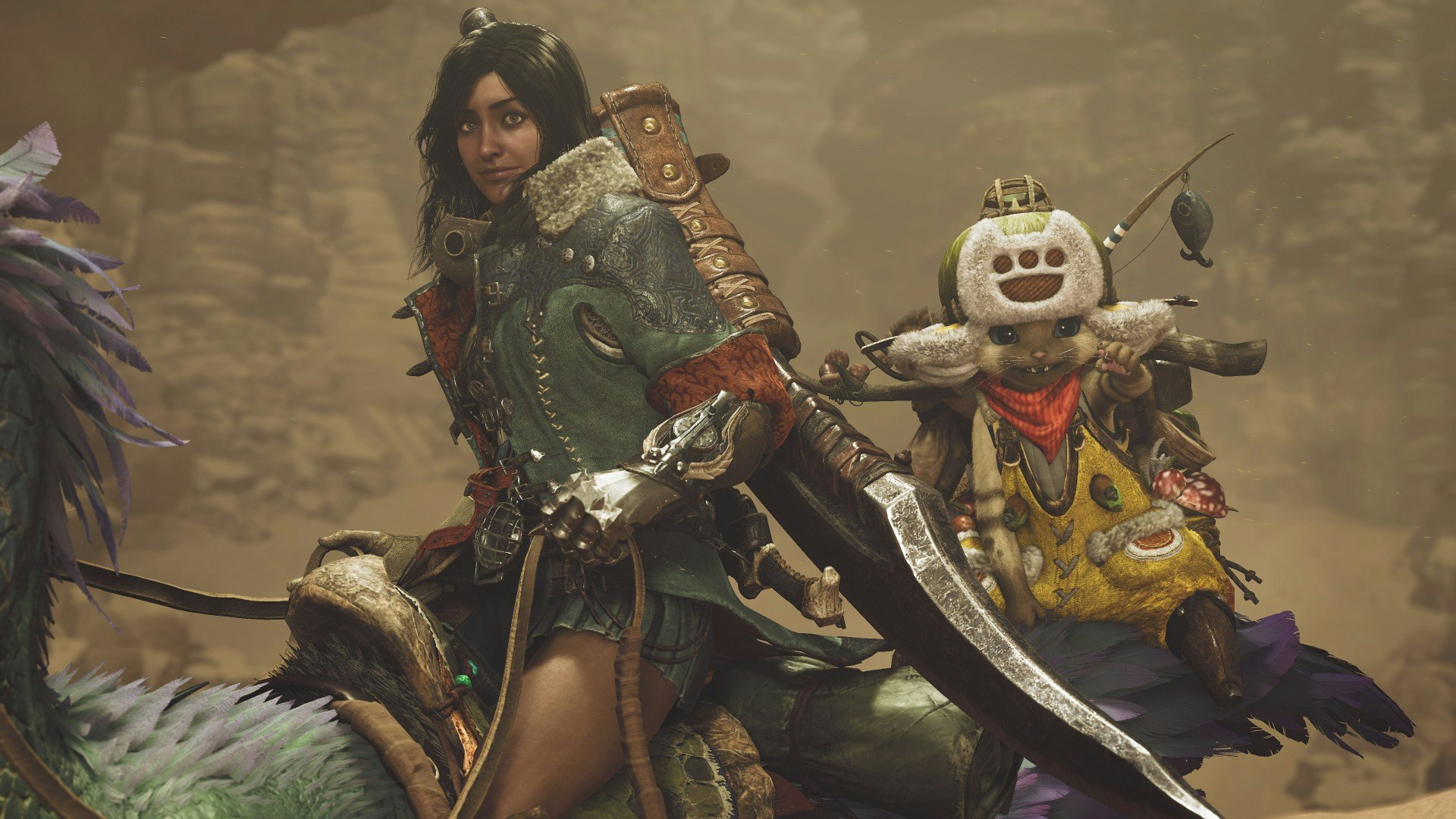
During Summer Game Fest, Inverse had the chance to see a nearly one hour guided demo of Monster Hunter Wilds, and it’s clear the follow-up to World is full of inspiration. There are some massive changes coming with this iteration, including a seamless open world that doesn't force players back to camp after completing a quest, two weapon slots for the first time in the series, herd and pack mechanics for monsters, and much more. What we got to see of Wilds was stunning in every sense, taking us through a nail-biting hunt to take down a massive bear monster, culminating in the bear running headlong into a sand-swimming snake, with our hunter caught in the middle.
There’s clearly a real thoughtfulness on Capcom’s part to streamline nearly every system the series has, and create a massive ecosystem that feels living and breathing.
Wilds looks like a game made for both hardcore fans and newcomers. With that in mind, Inverse talked to Tsujimoto and director Yuya Tokudak, diving into the design ethos behind Monster Hunter Wilds, and how the team wants to push the series even further.
This interview has been edited for clarity and brevity.
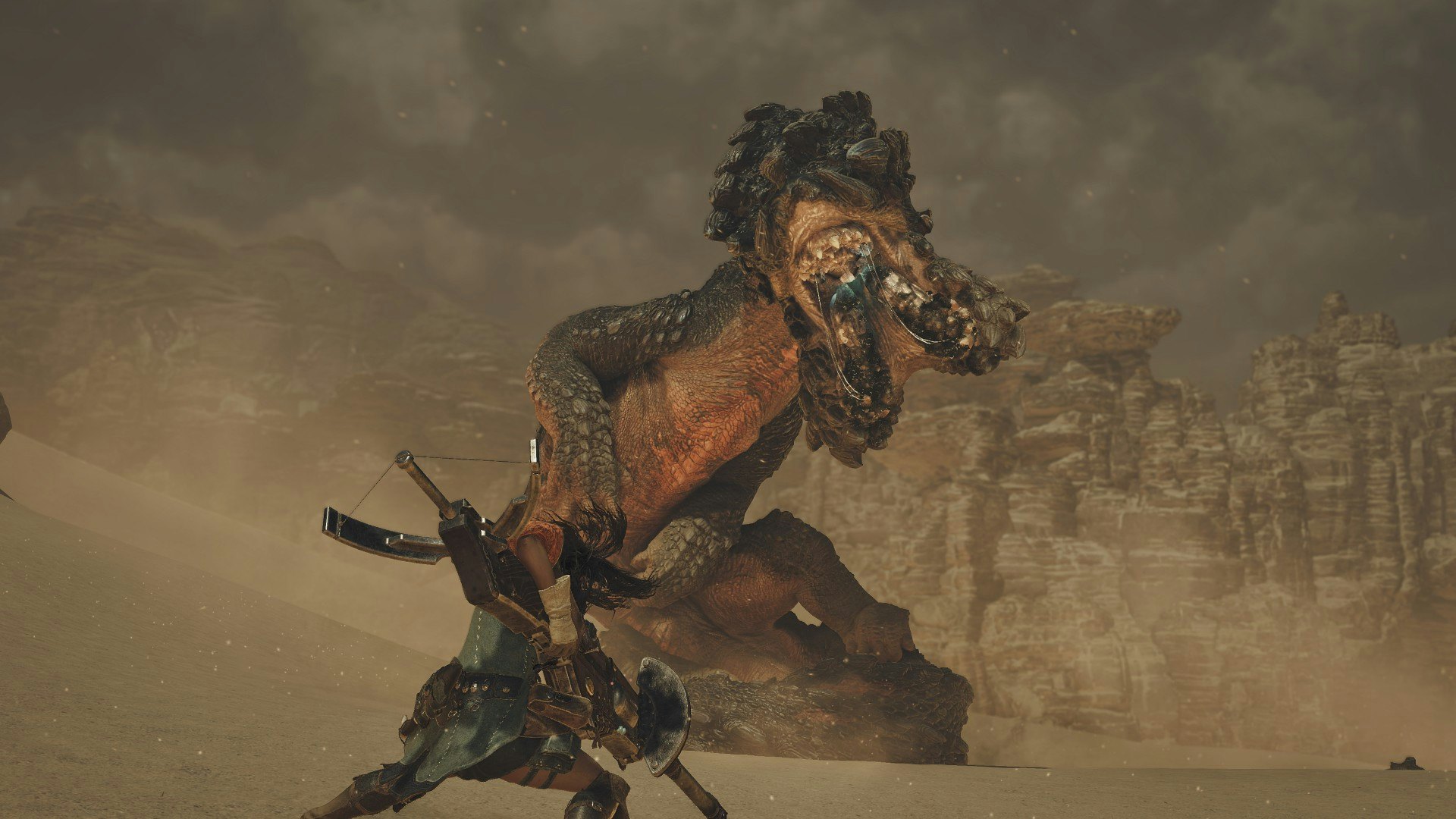
This is the first Monster Hunter game where you've given players the option to have two weapons slots. How did that change your approach to designing the game? How did you account for players now having two weapons?
Tokuda: It's not so much that we decided to let you have two weapons and then that affected the gameplay. The decision to allow you to carry two weapons is a result of other gameplay design choices.
We've got such bigger maps this time, often two times or more bigger than our other titles. There are so many more monsters to deal with, and you can just organically start quests by choosing a target on the field. It’s so seamless that you can essentially change what it is you want to be doing at any given moment.
That means that if you just take one weapon, come out of the base with one thing in mind and then emergently make decisions on what to do next or even after you've hunted your target, if you only have one weapon with you, I just felt that would be too limiting in terms of your strategic possibilities. It would necessitate constantly going back to camp to get different weapons just because something else has happened.
So we added the idea of the mount, the Seikret, as a place for you to stash a second weapon. That means you have the possibility of bringing, for example, a ranged weapon like a bowgun along with a blade weapon, or you could even bring the same weapon twice with different properties. You could bring a Long Sword that’s got a certain elemental property and another one that's different, and choose which one you want depending on unique monsters. With how wide ranging the gameplay becomes, it makes sense to have a wide range of tools.
One of the highlights of World was how monsters would interact and have turf wars. How have you improved that system in Wilds, and ensured that the way monsters interact feels dynamic?
Tokuda: In Monster Hunter World, two large monsters could have a turf war. Of course, that can still happen, but there are also more possibilities, partially because at any given time you might be dealing with so many more monsters, such as the packs of carnivorous monsters or herds of herbivorous ones going around the stage.
The Balahara (sand swimming leviathans) hunt in packs by diving in the sand and spiraling around, and they create these massive quicksand traps that you can use to your advantage by leading the other monsters into their territory and then start a turf war between your main target monster and a pack of Balahara. Or even some of the smaller monsters as well as the larger ones. There are smaller carnivorous monsters that can jump all over bigger ones if they get in their way. There are a lot more emergent possibilities, due to how expanded the gameplay design is.
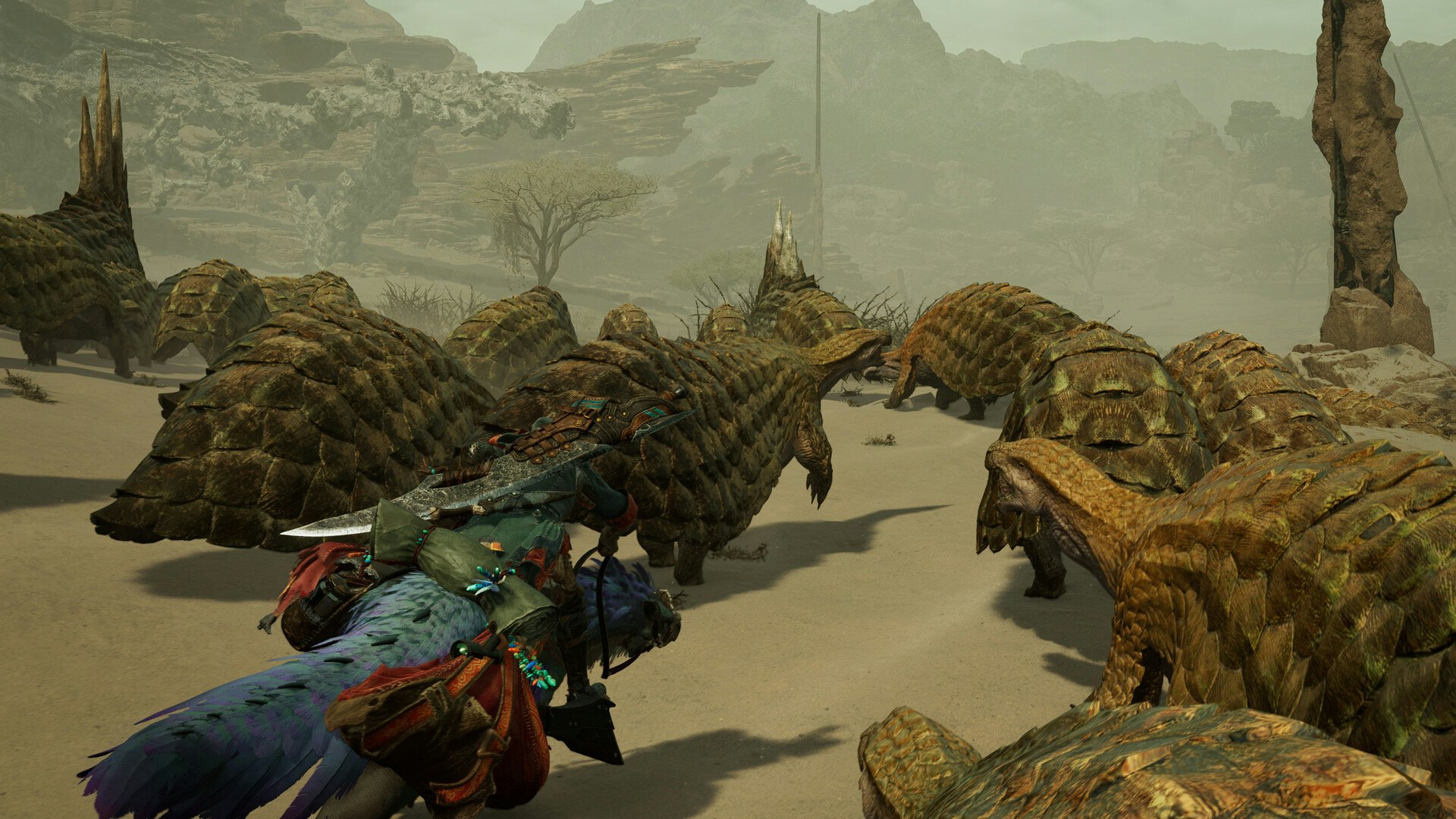
The dynamic weather system is one of the most interesting new additions. I'm curious, in the demo that we saw, there was that lightning storm that came in and then there's the monster that shoots lightning. Is there a link between monster and weather? How do they affect each other?
Tokuda: So the way the adverse weather impacts the environment, with the example of the lightning storm, some monsters might form into packs to stay safe. Some of them will come out at that time, it’s an opportunity for them, and some will hide.
t isn’t necessarily linked as a one-to-one relationship. The ecology of each area. and we've only shown one area so far, but it’s such that we try and think of it as a plausible ecosystem. If there was this kind of creature that lived in a desert, and there was a storm, would it hide? Or would it be opportunistic? Those kinds of relationships depend on the area and the monster.
Without going into stuff we probably can't talk about it yet, there’s plenty of ways in which these adverse weather affects change between phases of bounty and more harshness. The way these affect what monsters you see is definitely one of the most interesting parts of the game.
The map in Wilds looks like a huge improvement over World. Was that a focus that you had during development? How did you want the map to be more usable in this game?
Tokuda: For sure, we’ve definitely heard the feedback from World. With the much larger maps and the increased three-dimensionality and verticality the classic map screen wasn't quite cutting it.
There's a vastly improved map screen. First and foremost, the different vertical layers of the area are much clearer to see. But in addition to that, we want to make sure that the information is available at any given time, not just for what monsters are around, but what calculable items are gatherable items plentiful, or even the traps and things you can use, like rockfalls.
There's even a sort of timescale showing you that this is here at the moment because it's daytime, and in the night it'll be something else instead. Or in the plentiful weather phase you'll find “ABC,” but in the more desolate and harsh phase, there'll be “XYZ.” It just gives players all the information they need to feel that they know not only where they're going, but like when to expect certain things to happen, and what to target next.
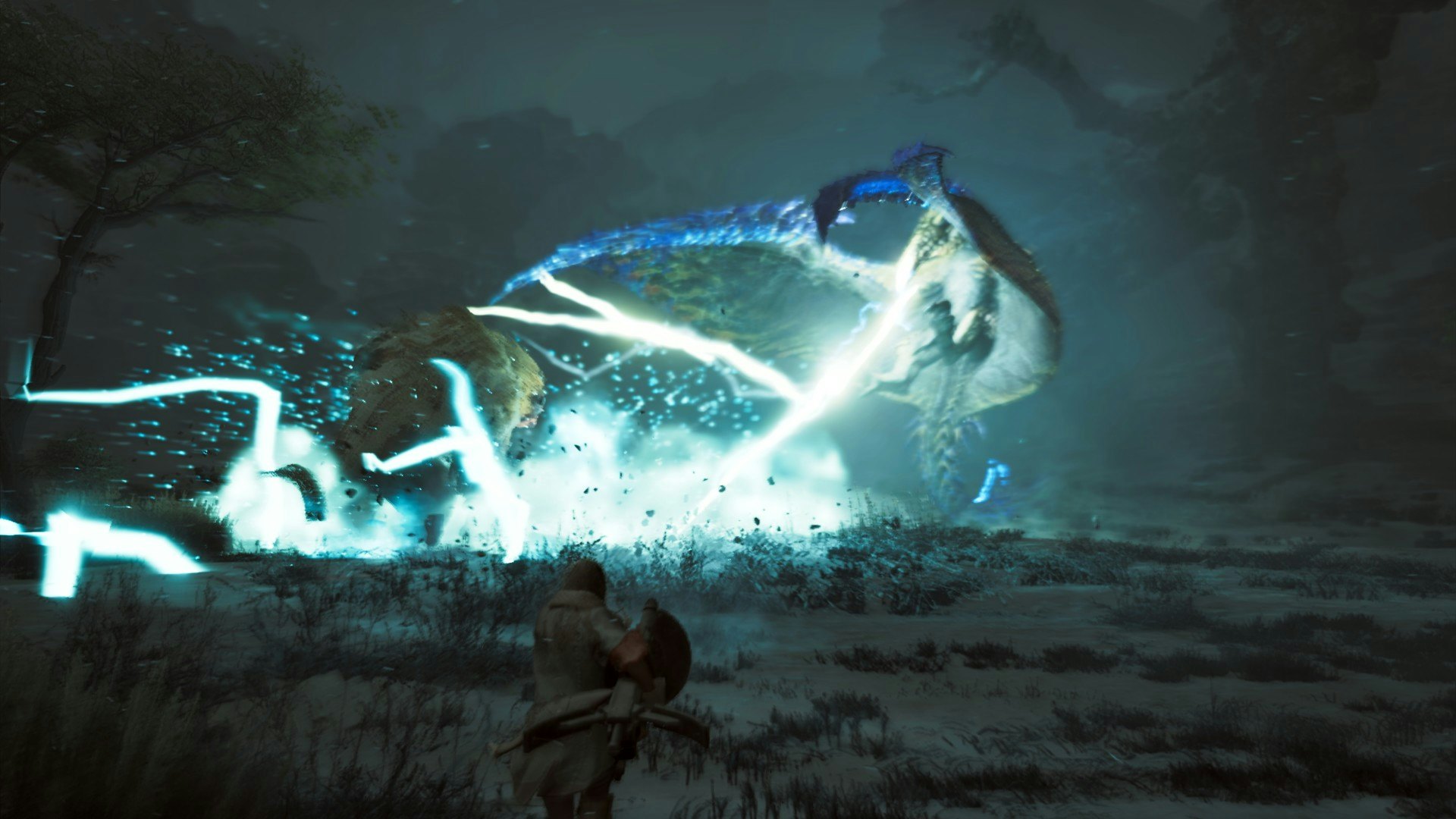
The monsters in Wilds look a bit harsher, almost more alien, than they did in past games. How did you approach designing them, and did you want the monsters to feel different?
Tokuda: I didn't have an idea that they should all look alien compared to previous Monster Hunter games. But the fact that we focused on this quite harsh desert environment, with the first one we’re showing, and then one of the series specs is that the creatures are not designed just as bosses or enemies, but we keep saying the word plausible. They all need to feel like they could be living in that environment, regardless of whether there's a hunter, because the ecosystem of the environment informs the monster design so strongly, in our minds.
What we've gotten to show so far are quite harsh and vicious threats of monsters, they're fitting to the environment they live in and the extremities that that environment has in terms of the weather. So that extremely harsh, brutal, lightning storm begets brutal monsters. The desert also creates hardy creatures who survive in difficult environments in the real world. So maybe the selection so far has been more biased towards that style of design.
But if players are worried that they won't have more typical Monster Hunter “characters” of monsters, I would reassure them by saying that there's plenty more we haven't shown yet.







